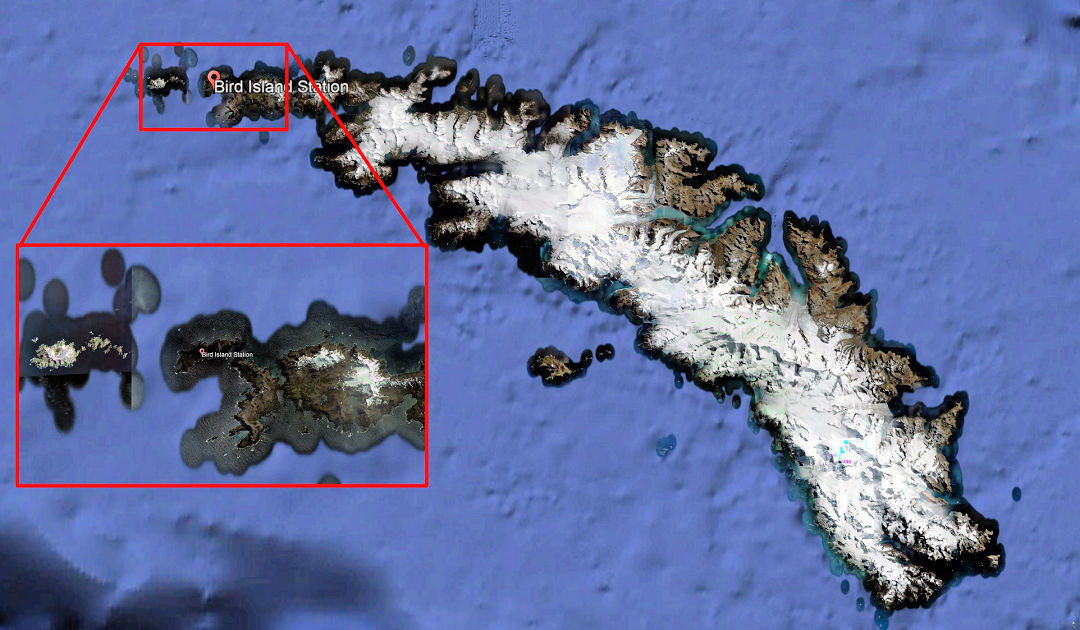
For some time now, the highly pathogenic avian influenza virus HPAI-H5N1 has been rampant worldwide, causing the death of millions of birds. In South America’s southern regions, the pathogen has also been found in both birds and marine mammals. But now the warnings of experts have come true and the virus has reached the Antarctic.
According to a press release issued by the Government of South Georgia and the South Sandwich Islands GSGSSI, the virus has been detected in brown skuas on Bird Island. This means that the HPAI-H5N1 virus has officially reached the Antarctic.


Both the GSGSSI and the British Antarctic Survey (BAS) said the samples were taken after several birds had shown symptoms of bird flu and there had also been unexplained deaths. Researchers conducting work on Bird Island on the various bird species took the samples from potential cases and sent them to the Animal and Plant Health Agency laboratory in Weybridge, UK. There, specialists were able to detect the highly contagious virus. The corresponding results were then forwarded to BAS and GSGSSI. Both agencies confirm that these are the first official cases of HPAI-H5N1 detected in the Antarctic.
Authorities believe the birds brought the virus in from South America. “HPAI spreads primarily by natural means, probably by birds returning from their migrations from the South American continent, where the disease is widespread,” GSGSSI writes. Authorities are not surprised, however, as teams of experts had long warned that avian flu was likely to be introduced into the Antarctic this season. It was no longer a question of “if,” but only “when,” experts agreed.


BAS experts also believe that the occurrence of the disease is linked to the migratory movements of skuas. According to a 2015 study, skuas migrate far up into the North Atlantic and as far as Alaska to feed during the southern winter. It is not until the onset of the southern spring that they migrate along the South American coast all the way back to South Georgia and the Antarctic Peninsula. There they often nest near bird colonies, where they seek food consisting of eggs, chicks and dead animals. This poses the risk of becoming infected with the virus and passing it on in this way.
Both BAS and GSGSSI have put immediate measures in place to increase monitoring of bird colonies and populations. In addition, the affected sites are now subject to special security measures, primarily affecting the research team. The site will remain closed for visitors until further notice. Bird Island now has been raised to a Hazard Level 2, while the rest of the island has been raised to a Level 1. This means that increased biosecurity measures apply to all visits, such as cleaning of all outdoor clothing and equipment, no ground contact except with feet, no touching of animals, and increased vigilance for symptomatic phenomena.
Closing the landing sites is not on consideration at this time, the administration explains. “It is not possible to predict the impact of HPAI on South Georgia because patterns of transmission and mortality have been highly variable across the species ranges in Europe and the Americas,” GSGSSI states. However, because the virus now causes increased mortality not only among birds, but also affects and kills marine mammals such as seals, the administration reserves the right to tighten measures.
IAATO, the International Association of Antarctic Tour Operators, has already adjusted its rules in the run-up to the Antarctic season and is focusing on increased cleaning and on educational work.
Dr Michael Wenger, PolarJournal
Those interested in learning more about biosecurity measures on South Georgia can download the latest edition of the “Biosecurity Handbook” here (pdf, in English).
More about this topic





